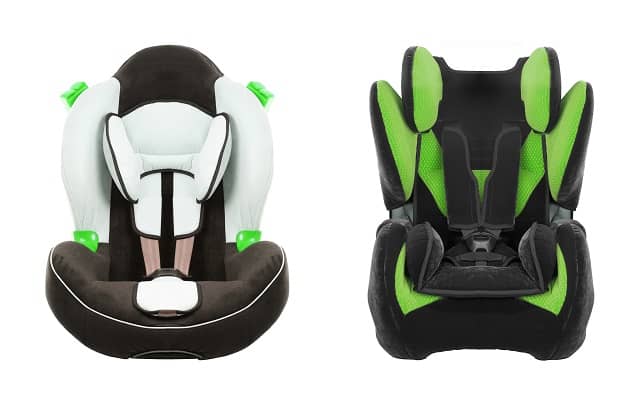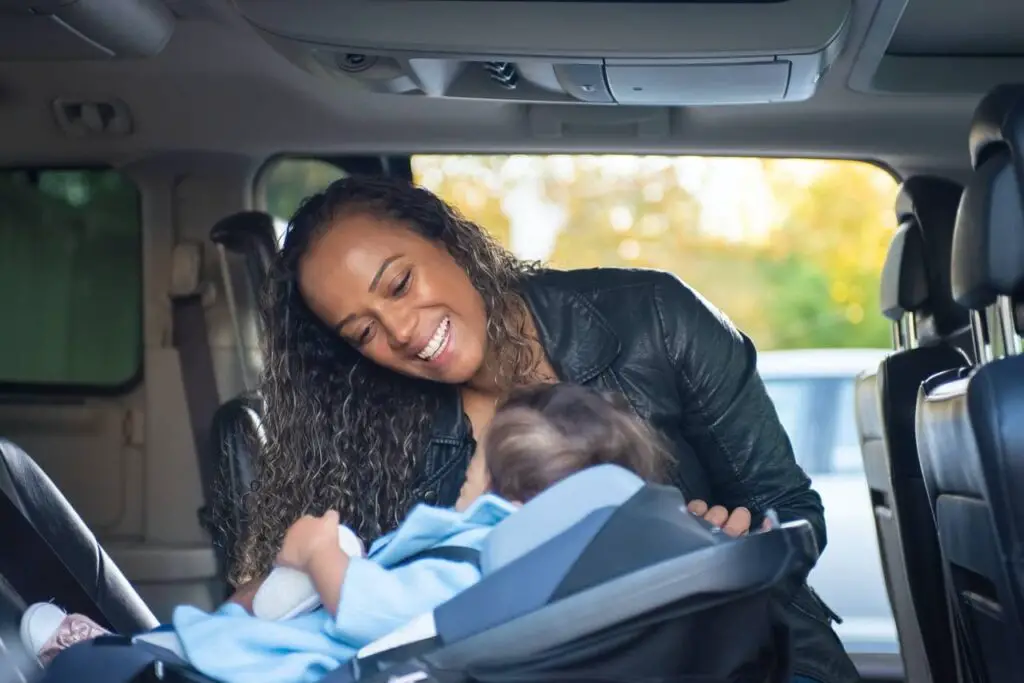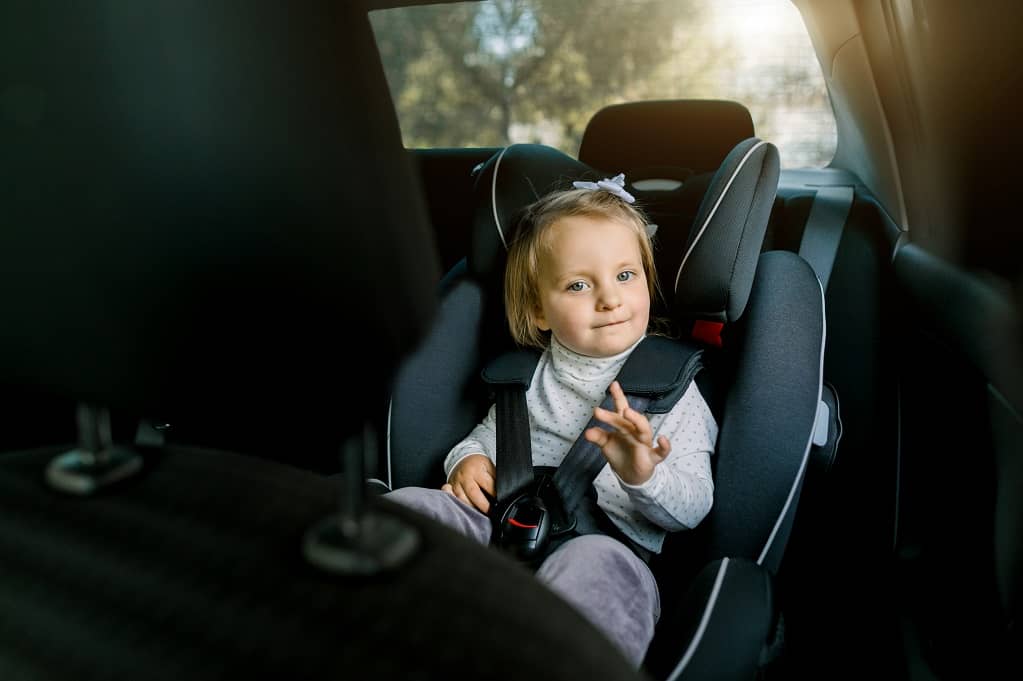Safest Car Seat Placement for All Ages & Stages
Maybe you are a new parent or you just got a car seat as a gift and you’re already asking the question, where best or the safest place for car seat? Well then, you are just about the right corner to find out the safest place for a car seat placement.
Oh, you may not even be in either of these categories, but you just need the guide to improve upon your knowledge or to know if you are already doing the right thing. Stay put, you’re still in the right place.
Or maybe you are still contemplating which car seat to go for, here’s a comprehensive guide on how to choose a car seat.
There are safety regulations that guide the installation of a car seat in the right place.
I have taken many hours to research these guidelines from appropriate sources on car safety seat placement standards and put this together as an article to serve as an helpful guide for you.
Toddler and infant car seat types
As much as we are concerned about the safest place for a car seat, it is important to also learn more information about the types of car seats and the category of age that is fit for each type.
1. Toddlers and infants
The types of seats for this category are rear-facing-only and rear-facing-convertible.
Toddlers and infants are to ride in this type of car sear until they reach the highest weight or height that is allowed according to the infant seat manufacturer.
Please consult with the manual to confirm more details.
However, most convertible seats have upper limits up to the age of 2 years or more.
2. Toddlers and preschoolers
Children of this category of age are recommended to use the forward-facing convertibles and the forward-facing with harness.
This age of children are considered to have outgrown the rear-facing weight or height limit for those seats they used earlier.
At this age, they can use the forward-facing seat that has an harness for as long as possible, but still up to the limit allowed the infant seat manufacturer. Please consult with the manual to confirm more details.
However, most convertible seats for this age have a weight limit of up to 65 lbs. or more, Here is a guide on how to choose a convertible car seat.
3. School-aged children
The type of car seat for this age category is the booster seat.
All children who may now have exceeded the limit (weight and height) for the forward-facing convertibles may now use a belt-positioning booster seat until they can fit into the vehicle seat belt properly.
This would be at around 4 ft 9 in in height and up to 8-12yrs in age.
All children lesser than 13 years are to still ride in the car back seat.
Car safety seats standards: correct installations for car seats
Quickly, ahead of what we are going to be going through soon, I’ll quickly put this very important study result here.
A car crash study data found out that children under the age of 3 years fastened in a car seat placed at the center in the back seat were less likely to be injured in a car crash.
This study included data from 4,790 car crashes across 16 U.S. states over 8 years (1998 – 2006).
correct installations for car seats
Going forward, where then are the correct installations for car seats?
The following the different locations for positioning child car seats in cars:
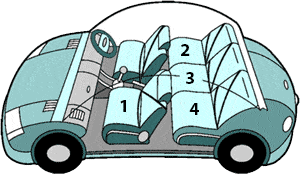
Position 1 – front passenger seat
This is the common position new parents often place the car seat.
This applies to other parents too as they often like to keep an eye on their baby, of course who doesn’t want to stare at that beautiful gaze of their newborn.
But remember you are not to be distracted when driving in the first place.
If there must be a need to monitor a baby through a ride (maybe for health reasons), you may need another adult to accompany you and be with the baby at the back seat.
Putting a car-seat in the front seat is dangerous when the passenger airbag is active. At most, the air-bag must either be deactivated manually or if it can be done automatically if it has sensors to detect a car seat has been installed, then a rear-facing car seat can be legally installed in the front, but still safer at the back seat.
If you would be using the forward-facing car seat in the front, then you must make sure the passenger seat is pulled far back to the rear as much as possible to give a safe distance to the dashboard. You also double-check that the car seat is well secured by the seat belt.
Position 2 – Rear seat behind the driver
When choosing to use this position of the car you have to consider where you park frequently and which side faces the road or the pavement.
You don’t want to be standing at the roadside to carry your baby, this is not safe.
The opposite side to the driver’s seat, that is, behind the passenger’s seat will be a better option if your parking spot is usually next to the pavement, say front of the house.
One essential thing however, is to make sure your infant seat is fitted correctly in place.
Position 3 – Center rear seat
You would want to consider this position if your car has a three-point seat belt (lap and diagonal). This will hold the car seat and your baby very firmly in the case of any eventuality.
The middle rear seat is considered the safest place for a car seat except a specific manufacturer’s manual states otherwise of where exactly to place a car seat.
This position is considered the safest because there are no activated air-bags anywhere close to the baby that could inflate and hit the baby at a very high pressure.
And also, because it is the farthest away from the side doors. There’s also enough room for where the shattered windows can fall to instead of right on the baby.
If by chance, your car has a lap-only seat belt at the rear seat, confirm with the manufacturer manual that the car seat can be fit with a lap-only belt because most car sears require the three-point seat belt
Position 4 – rear seat behind the front passenger seat
This position is better than behind the driver as most places you will be parking your car will be next to the pavement.
Also, do make sure that the car seat is well secured and fitted correctly.
Safest place for forward-facing car seat
A common question I see parents ask usually, can you put a forward-facing car seat in the middle?
This is exactly the best position to place a forward-facing car seat, right in the center of the back seat.
Anywhere else will not be recommended especially in the front seat next to you.
You don’t want the pressure of an inflated air-bag hitting your baby right in the face in the eventuality of a car-crash. This could be really fatal and in the worst-case scenario, loss of life.
safest place for a rear-facing car seat
For a rear-facing car seat, the safest place is still the center of the back seat.
The front next to you may seem an ideal place so you can easily get off the car and remember to carry your baby, it isn’t all safe in the general terms.
It is estimated that every year, between 30 and 50 babies do die as a result of hypothermia and heat illness in the U. S. after been left in a car. I can understand this may be why you do put the car seat at the front.
In the event of a car crash, the air-bag will inflate against the rear-facing backrest of the car seat and cause a severe pressure to the back of your baby’s head.
In extreme case this could lead to instant fatality as just the pressure alone would be so much to cause much damage.
can a rear-facing car seat be in the middle?
Absolutely, just like the forward-facing and the rear-facing I just explained above, this type of car seat can be in the middle. In fact, it is the safest place for a car seat.
Some parents may be in the habit of fitting the car seat either behind the driver or the passenger seat, behind the passenger seat particularly, so to be able to keep an eye on the baby, but then, safety is the critical point.
The rear-view mirror can come handy here to keep an eye on your baby.
safest spot for booster seat in car
For a booster seat, same will apply for the other car seat types also.
Just to reiterate on the safest place for a car seat irrespective of type, the middle of the back seat is the best position.
But as already mentioned earlier, there may be exceptions where you may need to place the car seat in another position, then either of the back seat position will be okay but the front passenger seat with an activated airbag should never be an option.
does the car seat go behind driver or passenger?
If you may still be unsure of the safest place to place the car seat, I’ll say, due to safety reason and what is required legally, the car seat should go to the center back seat.
But, if you must use a different place other than the center for any reason, then behind the front passenger seat should be fine.
You have to make sure the seat is fitted correctly and securely, and where you’ll be parking most times is next to the pavement to ease carrying your baby.
Additional guides – installation tips for the differrent types of car seats
Newborn and infant car seat guides
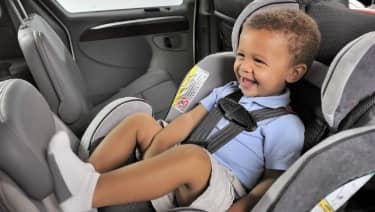
According to the American Academy of Pediatrics, it is recommended that infants enjoy their first ride home from the hospital in a rear-facing car seat and should use this type of car seat for as long as possible. That’s as good as saying all children less than the age of 2, and usually up to 4 can ride in this car seat.
But when they outgrow their rear-facing-only seat, they will then need the rear-facing-convertible type.
While getting help from a child passenger safety technician (CPST) for guidance on installation and to also help you decide the possible best place to install your infant seat, here’s some tips and guides that can help you a little.
Installation tips for rear-facing car seats
Make sure to always read the manufacturer’s installation manual before installing the seat as that is your first point of call when you receive your new infant seat.
- Place the straps in the slots that are below your child’s shoulders
- Make sure the car seat is fitted tightly and well secured with either the lower anchors or the seat belt locked
- Never place a rear-facing car seat in the front seat of a car that has the front passenger airbag activated. You could deactivate the airbag or if there are automatic sensors that detects a car seat is installed, the airbag will be deactivated. You have to verify this. In the event of a car crash and the airbag inflates, the pressure will hit the back of the car seat where your baby’s head is, and could cause fatal injuries, or worst case, death.
Installation tips for Toddlers and preschoolers’ seats – Forward-facing seat
- Make sure to always read the manufacturer’s installation manual before installing the convertible seat
- Here’s a video guide: How to Install a Forward-Facing Car Seat
School-age kids’ seats – booster seat
- Make sure to always read the manufacturer’s installation manual before installing the booster seat
- The lap and shoulder belts must be used with the booster seat.
- Here’s a video guide: How to Use a Booster Seat

